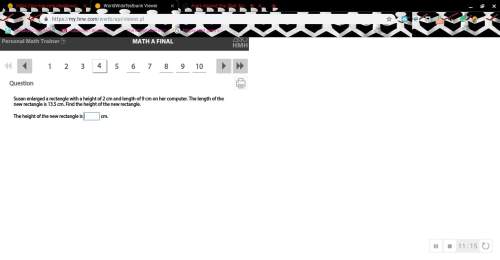
Mathematics, 30.10.2021 04:00, xxaurorabluexx
∆ABC is translated 6 units up and 3 units left to create ∆A'B'C'.
If vertex A is at (-1, 2) and vertex B is at (1, 5), then vertex A' is at .
A
(-4,8)
B
(5,1)
C
(-2,11)
D
(-7,-1)

Answers: 3
Other questions on the subject: Mathematics


Mathematics, 21.06.2019 13:20, areanna02
Which equation and solution can be used to solve this problem? thirteen less than a number is sixteen. 13-n=16: add 13 to both sides. the answer is 29. n+13=16: subtract 13 from both sides. the answer is 3. n+16=13 subtract 13 from both sides. the answer is 3. n-13=16: add 13 to both sides. the answer is 29.
Answers: 1

Mathematics, 21.06.2019 17:00, jadejordan8888
What properties allow transformation to be used as a problem solving tool
Answers: 1
Do you know the correct answer?
∆ABC is translated 6 units up and 3 units left to create ∆A'B'C'.
If vertex A is at (-1, 2) and v...
Questions in other subjects:
















